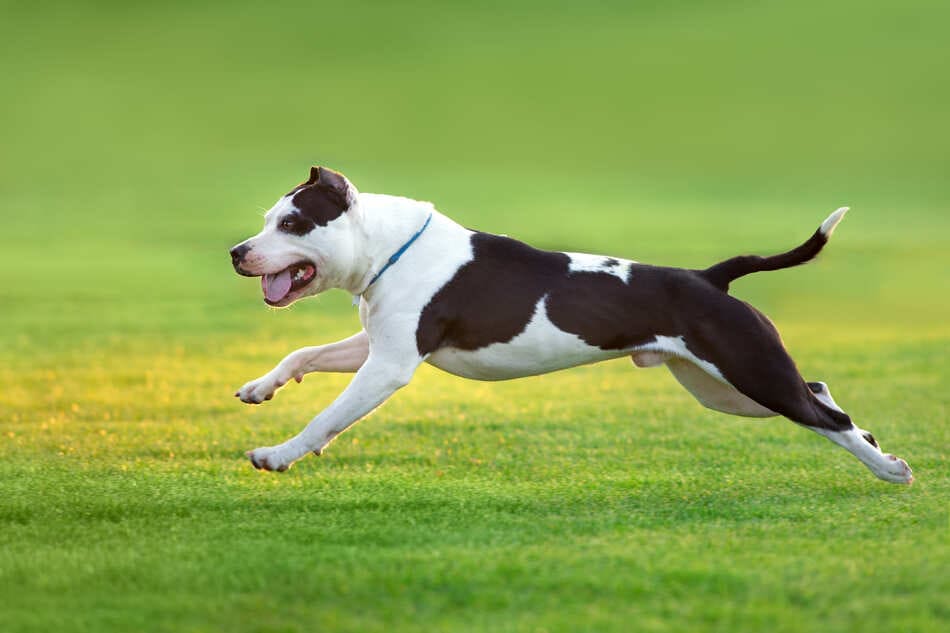The American Pit Bull Terrier (APBT) is a medium-sized dog with muscular, stocky builds and powerful jaws. Their impressive heads are large and square in shape, while their chests are strong and well-defined. These curious, intelligent dogs are always sniffing out a new adventure with their wide nostrils or clowning around at your side to get your attention. Their short, smooth and low-maintenance coat hugs their bodies and comes in every imaginable color and combination you can think of, other than merle (mottled patches of color). The breed’s eyes are round to almond-shaped and give it a somewhat-puppyish expression.
The American Pitbull Terrier’s temperament is perhaps one of the most misunderstood among dog breeds. Because they were historically bred for fighting, many people still associate their muscular shape and high-energy personalities with their long-gone ancestors.
Despite its reputation as an aggressive “bully breed,” Pitties are also sometimes called “nanny dogs” thanks to their affectionate nature. They are strong and confident but contrary to what you may have heard, this friendly—even goofy—breed brims over with enthusiasm for humans (even strangers), and one of their strongest desires is to please their families. Pitties want to be near their owners at all times, like a constant shadow following you everywhere you go. Despite their size, they’ll snuggle like a lapdog. Make sure you’re up for overwhelming doses of affection and sloppy kisses.
While untrained Pitties can have a tendency to chase after small animals like cats or squirrels, aggression towards humans is uncharacteristic of the breed, and biting is no more prevalent than among any other type of dog.




















